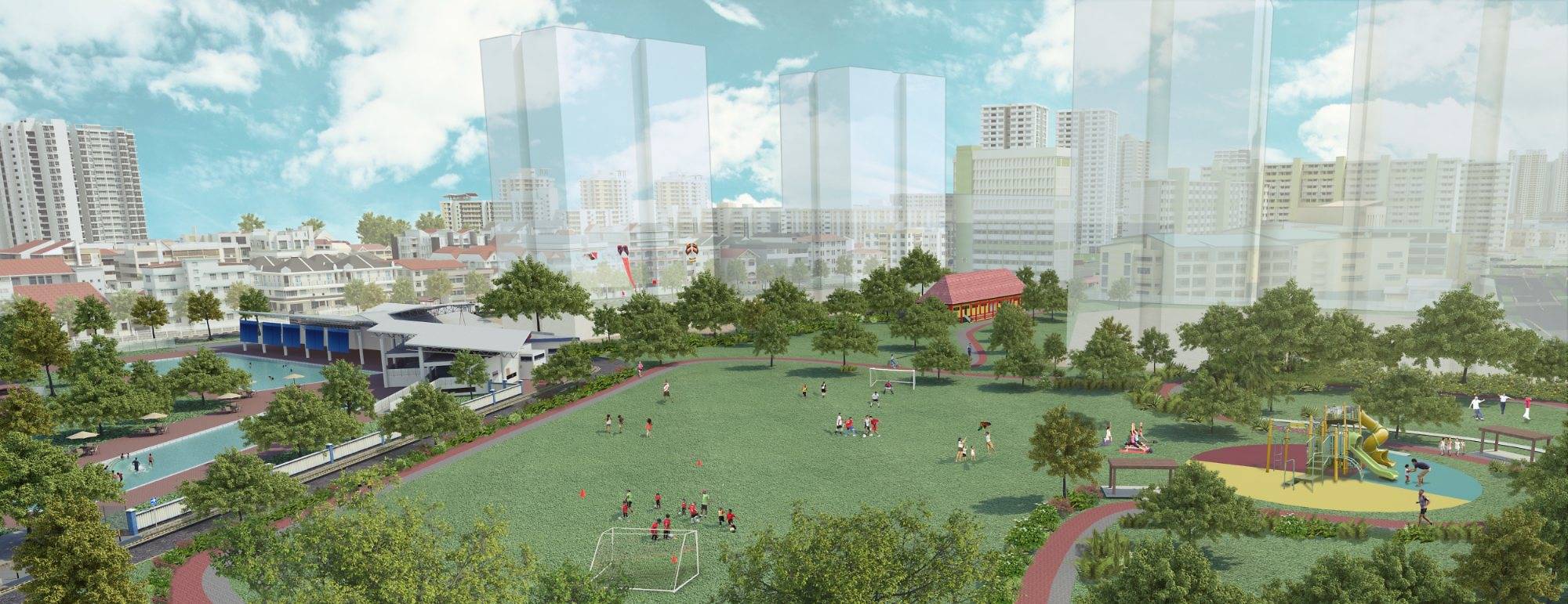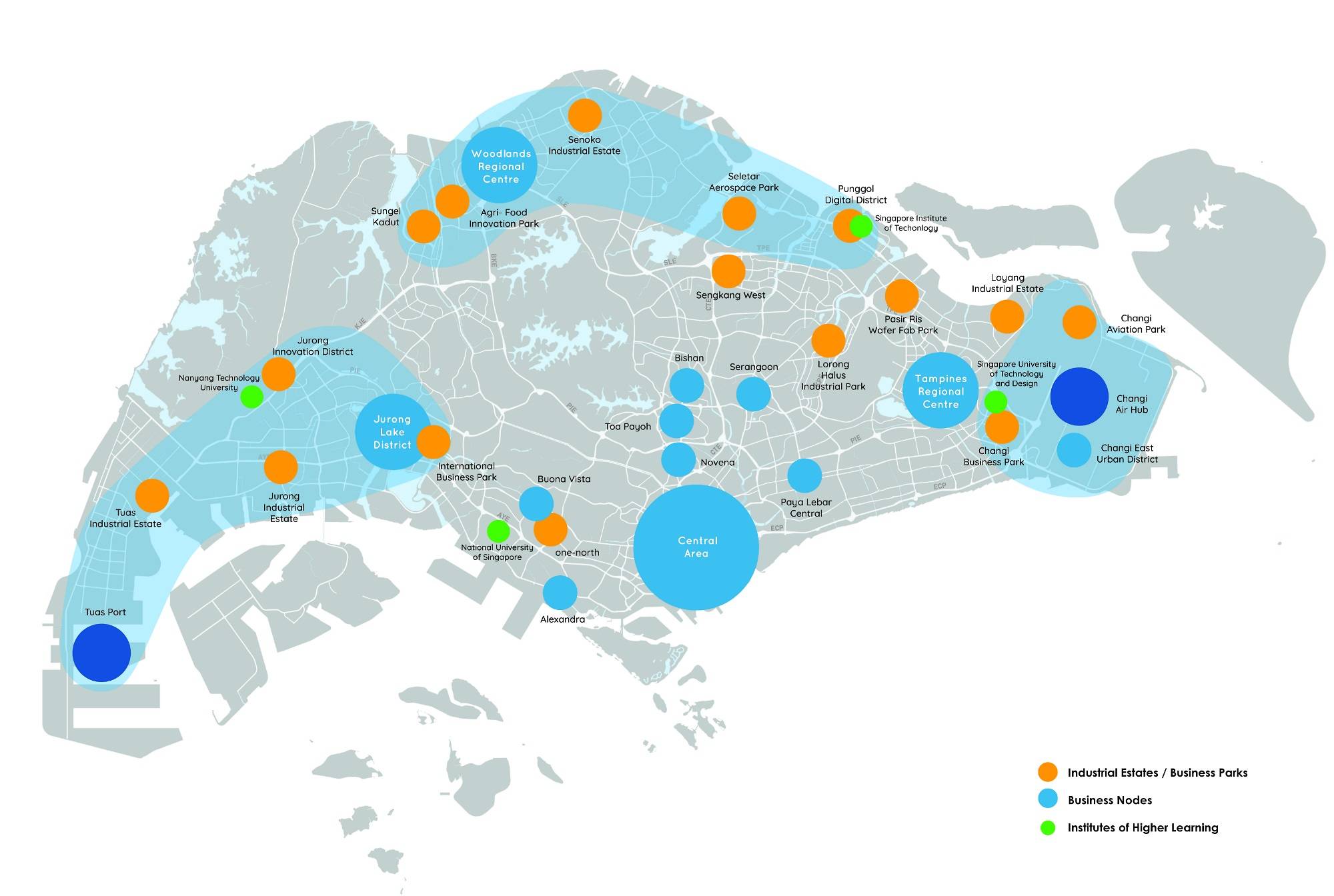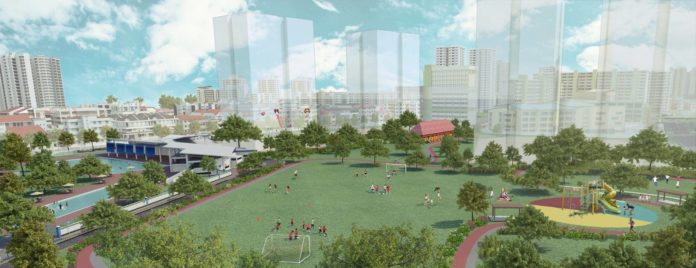SINGAPORE: More homes will be made available in the central business district (CBD) and Marina Bay area, the Urban Redevelopment Authority (URA) said on Wednesday (Mar 27).
As part of plans in its Draft Master Plan 2019 to rejuvenate the central area, URA said it will increase housing in areas such as Downtown, Marina South and Rochor so that more people can live closer to their workplaces and amenities.
The plans for a larger live-in population in the office-dominated CBD and Marina Bay area is part of moves by URA to bring more life to the area after office hours.
“We are looking to bring in new housing options in the CBD. We want to make our CBD more vibrant, a 24/7 precinct, and housing is one of the ways where we want to bring in more people that will be living within the CBD areas,” said Ms Hwang Yu-Ning, URA’s chief planner.
The Central area also includes retail and entertainment clusters at Orchard and the Singapore River, as well as arts, cultural and heritage areas such as the Civic District, Bras Basah and Bugis.
Further south, the site currently occupied by Keppel Club will also be redeveloped for waterfront housing after the current lease expires in 2021, URA said.
The site – which is close to Telok Blangah and Labrador MRT stations – is part of the expansive 2,000-hectare Greater Southern Waterfront project stretching from Pasir Panjang to Marina East.
Some of the development in for the Greater Southern Waterfront will begin within the next five to 10 years.
MORE HOUSING IN MATURE ESTATES
Besides the Central area, housing and amenities will be also added to the new Bayshore precinct in the Upper East Coast area, and the mature towns of Dakota Crescent and Farrer Park.
A park will be built along the old sea walls, which are characteristic of East Coast Park, as a reminder of its heritage.
When completed, the new Bayshore precinct will have two MRT stations, Bayshore and Bedok South MRT stations. It will also be a car-lite precinct, prioritising walking and cycling with a public transit street lined with shops, food outlets and amenities.
URA said that going forward, future residential precincts will continue to be sustainable, green, community-centric and car-lite, with easy access to a range of public spaces and amenities. Amenities will also be located in one-stop centres similar to Our Tampines Hub to make it easier for residents to shop, dine, and engage in family-bonding activities under one roof.

Artist impression of the future Farrer Park. (Graphic: Urban Redevelopment Authority)
For an existing mature town such as Farrer Park, new housing will open up choices for those seeking to live near the city, URA said. Familiar landmarks such as the Farrer Park Swimming Pool and former Boxing Gym will be retained, while a sports field and park that will be integrated with future housing will allow residents to bond over sports and recreational activities, said URA.
Dakota Crescent can expect to see more public housing, which will be planned to take into consideration the six retained Singapore Improvement Trust blocks nearby, while the iconic Dove Playground will be retained for its heritage value.
BRINGING JOBS CLOSER TO HOMES WITH THREE “GATEWAYS”
Aside from housing, three major economic gateways in the west, north and east are being planned with each anchored in a few key growth sectors. They will serve as major employment hubs.
The eastern gateway is centered in the Changi Region to tap on the expansion of Changi Airport and its connectivity. The region comprises Changi Aviation Park and the future Changi East Industrial Zone, and will cater to aviation-related businesses.
Also part of the region is Changi City, which is slated to become an innovative lifestyle business cluster including Changi Business Park, Singapore University of Technology and Design, as well as the future Changi East Urban District located at the doorstep at Terminal 5.
READ: Jewel Changi Airport to open on Apr 17; Terminal 2 to be expanded
The northern gateway stretches from Woodlands to Punggol and will focus on the agri-tech and food sectors, digital tech and cybersecurity sectors.
WATCH: URA releases first white site in Woodlands Regional Centre
READ: New facility for high-tech farming, R&D to be ready by 2021: Koh Poh Koon
In Sungei Kadut, the new Agri-Food Innovation Park will be built as a pilot cluster to catalyse innovation in the agri-tech industry. The Park, which is located near to farms in Lim Chu Kang and businesses in the Senoko Food Zone, forms part of a larger Northern Agri-Tech and Food Corridor.

Plan of employment areas in Singapore with three key economic gateways in the northern, eastern and western regions of Singapore. (Graphic: Urban Redevelopment Authority)
In Woodlands, a new regional centre is on track to become the largest economic hub in the north over the next 15 years with spaces for business, industry, research and development, and learning and innovation.
New community links such as the WoodsVista Gallery and North Coast Vista will link up precincts within Woodlands and bring in more public spaces, and pedestrian and cycling infrastructure to the area.
To the east, the Punggol Digital District – Singapore’s first enterprise district – an integrated business park and the Singapore Institute of Technology university cluster will help foster closer collaboration between industry and academia.
READ: Woodlands to have six ‘star attractions’ under HDB renewal plan
READ: New business district in Punggol to chart Govt’s focus on digital economy, will create 28,000 jobs
Tapping on Tuas Terminal’s maritime connectivity, the western gateway will be moored alongside the Jurong Lake District (JLD) and Jurong Innovation District (JID).
As part of the Government’s decentralisation strategy, Jurong Lake District will be the biggest business district outside the CBD while Jurong Innovation District will become a next-generation industrial district covering Nanyang Technological University, CleanTech Park, Bulim, Bahar and Tengah.
URA’s Master Plan is reviewed every five years and charts out the Government’s plans for land use over the next 10 to 15 years.
“In this master plan, we hope to have inclusive, sustainable and green neighbourhoods that will make our city more resilient in the longer term. We are also working on plans to help rejuvenate existing familiar places to make sure we bring in new vibrancy and energy to these areas,” said Ms Hwang.





